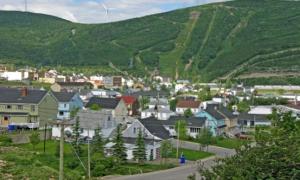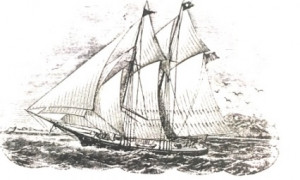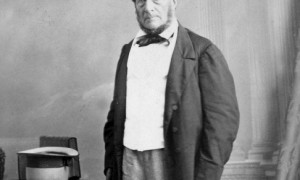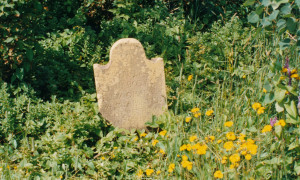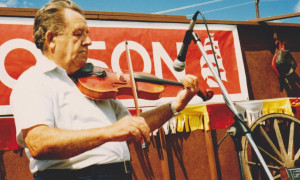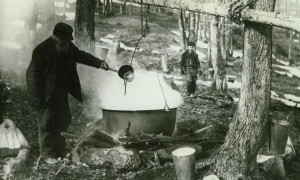Articles
--March 20, 2019.
1. What mineral, discovered 20 kilometres from the Gaspésie littoral in 1909 led to the founding of Murdochville, one of Quebec’s youngest municipalities?
a. Bronze
b. Copper
c. Nickel
d. Gold
2. In what river were traces of this mineral fist discovered by Alfred Miller?
a. York river
b. Dartmouth River
c. Saint-Jean River
d. All of the above
e. Both a and c
--March 21, 2019.
1. B. Copper
2. A. York River
3. A. The first president of the Noranda Mining Company. The former miners’ camp was named after him and was known simply as Murdoch.
4. B. 1,000. 300 houses were built to accommodate these miners between 1952 and 1953.
5. D. The charter required the mayor and all municipal councillors of Murdochville to be able to speak English.
GASPÉ BAY PIONEER MUSEUM
Historic and cultural town
Gaspé - Gespeg: a Micmac word meaning "land's end". More than 15 000 people are living on its territory that extends over 1 440 km2 and 130 km of coastline.
In 1534, the navigator Jacques Cartier from Saint-Malo, then on his first voyage to North America, found a safe harbour in Gaspé Bay. There, he erected a cross by way of taking possession of the territory on behalf of François 1er, King of France. That is why Gaspé is called the "Birthplace of Canada".
1909
Alfred Miller was guiding a party of timber men up the York River he noticed pieces of rock containing copper at the mouth of little York Lake.
1921 -1922
The five Miller brothers undertake an expedition to discover the location of the rocks that contain copper and their search ends near Copper and Needle mountains.
1932
Mr. I. W. Jones working for the Quebec Government inspected the Miller's claims wrote a report on the area.
--September 24, 2013.
On November 17,1907, construction started on Wakeham Hall , the building that was to become the focal point for the community of Wakeham for many years.
John LeBoutillier, originally from the Isle of Jersey in the English Channel, became a very successful Gaspé merchant and political figure. He was originally employed by the Robin Company, important fish merchants, where he learned the skills of the cod fish trade.
Located in the very heart of the city of Gaspé lies an ancient burial ground -- the O`Hara Cemetery. No one knows for certain how many souls were interred in this place. What is certain is that for many years the site was neglected, left to grow up in brush and weeds.
♪ ♫ ♪ From 2005 until 2010, I was one of two hosts at a weekly bluegrass and old-time music jam session at Grumpy's Bar in Montreal. As a fiddle player, I had spent the previous six years learning the old-time fiddle music of the southern United States.
(*Continued from That Gaspé Sound: Exploring the Old-Time Fiddle Traditions of the Gaspé Coast, Part 1)
Did you know that maple syrup is the oldest agricultural product in Quebec? It all began with the Indigenous peoples who called it “Sweet Water.” When spring returned and the maple sap was running the Indigenous peoples offered the boiled thickened syrup as a sacrifice to the Great Spirit. “Sugaring off” was largely a woman’s function in Iroquois communities. The men cut notches into tree trunks and small wooden troughs were stuck into the bark.
La Roche Percé, "the pierced rock," stands bold and firm to the end, though the cliffs of Mont Joli, on the mainland, and of Bonaventure Island, two miles out a sea, confirm the Indigenous tradition given by Denys that once there was no break in these perpendicular walls of rich-hued conglomerate, where the reds and browns of sandstone, the bright oli
The young boy was standing in front of a small wooden table on which laid a birthday cake with four lit candles. You could see the gleam in the little guy’s face, and his underlying smile of knowing that this was his day to be celebrated, and his day alone. Dressed in a clean white shirt, dark slacks, and a clip-on bow tie, we could sense what he was thinking as he continued his bright-eyed stare into the candles. We could almost feel his wonder at what other miracles life would bring, and that this birthday was certainly one of them.
My Gaspesian roots come from my great grandmother Melvina Chedore Maskrey. She was born in 1865 at L'Anse Au Gascon to Alexander Chedore and Maria Flowers. I had never known anything about my Gaspesian roots until 1985 and I didn’t even know where the Gaspe was in Canada. I started doing genealogy twenty-seven years ago before the birth of my own child. Even though I never met my great grandmother I am proud to say that she had a connection to the Gaspe and I have met many wonderful people and I was able to visit that region of Canada.
1. What two rivers meet at Matapedia near the head of Chaleur Bay?
2. Where did the first two permanent settlers in the Gaspé Bay area live?
3. What 3 rivers flow into Gaspé Bay?
4. What is the name of the town where Charles Robin first established his company headquarters?
5. What did the entire area surrounding New Carlisle become referred to legally?
6. Where was a Provincial Marine Biological Station and Fisheries School opened in 1948?
7. How long is the Cascapedia River?
1. The Matapedia and the Restigouche
2. Sunny Bank and Peninsula
3. The Dartmouth, the York and the St. John
4. Paspebiac
5. The Township of Cox
6. Grande-Rivière
7. About 75 miles
8. Mount Jacques Cartier in the Parc de la Gaspésie
9. Carleton
10. The Cascapedia Hotel
In Canada, heritage sites may be designated nationally, provincially and municipally. The level of designation depends on the level of significance of the site. National Historic Sites must be judged to be of national significance; provincial, of provincial significance, and so on.
Les Publications du Québec has just released a new book, titled Les ponts couverts du Québec. Produced in association with Quebec’s Ministry of Transport, the book is the first comprehensive study of the covered bridge phenomenon in the province.
Building the First Metis Beach Lighthouse
In 1873, R. Cameronof Lancaster,Ontario, was given the contract to build a lighthouse at Metis. Cameronhad already built several lighthouses along the St. Lawrence near the Thousand Islands. The construction cost $3518 of which the lighting and accessories accounted for $1425. The lighthouse was built of wood and was 40 feet high. The Light tower was made of iron and 7 1/2 feet in diameter.
